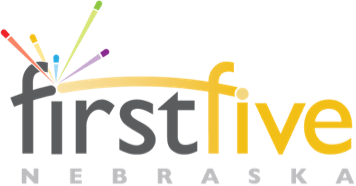This is the second in a series of three blog posts First Five Nebraska will publish on the Iron Triangle, a model developed by Louise Stoney (Alliance for Early Childhood Finance and Opportunities Exchange) and Libbie Poppick (Opportunities Exchange) that helps calculate the cost of providing the level of quality child care known to reduce the achievement gap. The three metrics of the triangle are Full Enrollment, Full Fee Collection and Revenue Covers Child Care Costs. Read our first blog post on Full Enrollment.
Early childhood care and education (ECE) businesses sometimes struggle financially, often due to challenges beyond their control. Some of challenges can be addressed, however, by using metrics to help focus on what matters most and to guide fiscal decisions.
As Nebraska providers seek to meet quality standards in Step Up to Quality, our state’s quality rating and improvement system, to establish environments that close the achievement gap, it’s increasingly important for ECE providers to operate their businesses possesses a sound finance strategy.
Louise Stoney of the Alliance for Early Childhood Finance developed a formula called the Iron Triangle that looks at three metrics that make ECE programs financially viable:
1. Ensure full enrollment, every day in every classroom.
2. Collect tuition and fees, in full and on time.
3. Collect revenue that covers per-child cost.
The three metrics are interrelated and operate like a sliding scale. If one moves, another must move to counterbalance it.
In this installment, we’ll look at the second metric—full fee collection.
Full Fee Collection
Collecting full tuition and fees every month is essential, including parent fees and public and philanthropic subsidies. This means adhering to clear payment policies, billing promptly, being firm and consistent with families and tending to paperwork required by third-party funders.
Early childhood education providers often find themselves with budgets that balance on paper, but actual collections don’t line up to cover the costs. Why? Staying in contact with families on cost matters and taking advantage of new technologies to make billing matter easier can ensure the revenue they are counting on becomes a reality. Systems like automatic billing, online bill pay through banking institutions and smart phones and tablets have brought making payments as easy as one click for families to pay providers, and for providers to inform families when payment is due.
The Policy Piece
Policymakers can look to developing strategies key to assisting providers in full fee collection. Possible actions that would help include reviewing or allowing co-payments based on percent of the family income, creating an absence policy that takes matters such as extended illness or family instability into consideration for subsidy reimbursement, and maximizing automation, including online billing for public fees, or tax breaks for provider cooperatives who hire a third party to handle billing and fee collection.
For more information: Using Metrics to Drive Quality and Sustainability in Early Care and Education Programs


